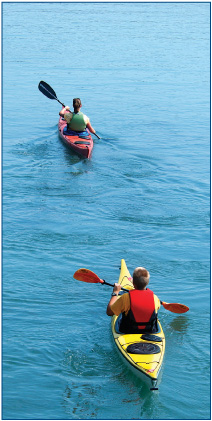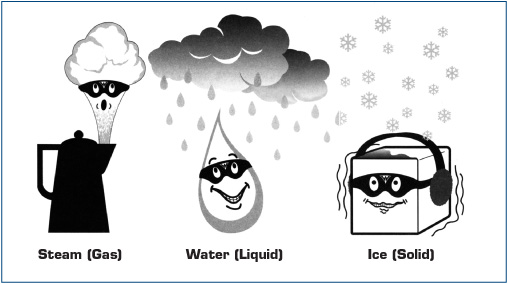Great SHIPS on the Great LAKES

Great SHIPS on the Great LAKES
A Maritime History
Catherine M. Green
Jefferson J. Gray
Bobbie Malone

Published by the
Wisconsin Historical Society Press
Publishers since 1855
2013 by State Historical Society of Wisconsin
Publication of this book was made possible in part by a generous grant from Thunder Bay National Marine Sanctuary and the Michigan Historical Center.
For permission to reuse material from Great Ships on the Great Lakes, 978-0-87020-582-8, please access www.copyright.com or contact the Copyright Clearance Center, Inc. (CCC), 222 Rosewood Drive, Danvers, MA 01923, 978-750-8400. CCC is a not-for-profit organization that provides licenses and registration for a variety of users.
wisconsin history .org
Photographs identified with WHi or WHS are from the Societys collections; address requests to reproduce these photos to the Visual Materials Archivist at the Wisconsin Historical Society, 816 State Street, Madison, WI 53706.
For photographs identified as belonging to Thunder Bay National Marine Sanctuary, please contact Thunder Bay National Marine Sanctuary, 500 West Fletcher, Alpena, MI 49707.
Front cover: The schooner John J. Audubon lies 170 feet deep in Lake Huron. Photo by Doug Kesling, NOAA, Thunder Bay National Marine Sanctuary
Frontispiece: The City of Alpena steamer, courtesy of the Thunder Bay Sanctuary Research Collection
Designed by Composure Graphics
14 13 12 11 10 1 2 3 4 5
The Library of Congress has cataloged the printed edition as follows:
Green, Catherine, 1974
Great ships on the Great Lakes : a maritime history / Cathy Green, Jefferson J. Gray, Bobbie Malone.1st ed.
p. cm.
Includes index.
ISBN 978-0-87020-582-8 (pbk. : alk. paper) 1. ShipsGreat Lakes (North America)HistoryJuvenile literature. 2. ShippingGreat Lakes (North America)HistoryJuvenile literature. 3. Navigation Great Lakes (North America)HistoryJuvenile literature. 4. Great Lakes Region (North America) NavigationHistoryJuvenile literature. I. Gray, Jefferson J. II. Malone, Bobbie, 1944- III. Title.
VK23.7.G724 2013
386.0977dc23
2013008043
Contents
1 What Is Maritime History?

University of Wisconsin Cartography Laboratory
When we study history, we use stories and clues from the past to help us understand events and why they happened. If we get our stories and clues from the lakes, seas, or oceans, then we are studying , including the lakes, to live their lives. And it tells about the many different types of boats people built to help them follow their dreams.
For thousands of years, people have used lakes and rivers in the Great Lakes . In the time before there were streets, railroads, and highways, water was the best way to move people and the things they used or wanted. Why was traveling by water easier than traveling by land? How did people use waterways for transportation? Where did people go? What kinds of boats did they use? How did those who came from other places reach the Great Lakes region? These are some of the questions this book will answer.
2 Lakes, Rivers, and Ice
Water. We drink it. We wash dishes, take baths, fish, and swim in it. We canoe, water ski, sail, and ice skate on it. We also things and travel across water. We even make power from water. Water is part of everything we do and is absolutely necessary for all life on earth. Water even makes up 60 percent of our own bodies!
Luckily, the Great Lakes region has plenty of water. With Lakes Superior, Michigan, Huron, Ontario, and Erie, much of the northern border of the region is formed by water. And water is everywhere in betweenwith thousands of lakes and thousands of miles of rivers and streams. In fact, the states of Minnesota, Wisconsin, and Michigan and parts of Indiana, Ohio, Pennsylvania, New York, and the Canadian a boat.
Smaller waterways, such as creeks or ponds, may only be large enough for a small boat, like a canoe. The Great Lakes, however, are large enough to allow huge ships to travel them. For thousands of years, people have used large and small waterways to travel and to move their goods. needed natural resources, such as fish and plants. More recently people have enjoyed vacations on our lakes and rivers. By learning about waterways in the Great Lakes region and how people have used them, we can learn a lot about the ways people have lived and worked here.

Two people on the Detroit River.
Michigan Sea Grant

A in Green Bay Harbor, Wisconsin, about 1990
Wisconsin Department of Tourism
How did so much water find its way into our region? How has it shaped our landscape? In this chapter we will explore the answers to these questions, but we will find ourselves asking many more as we navigate our way through this book.
Although we may not often think about the water around us, it has amazing qualities. Its like a superhero! It can easily and quickly change from steam (gas) to water (liquid) to ice (solid). Water is strong like a superhero, too. By pushing up against or supporting floating objects, water can lift and move heavy materialsfrom huge logs to ships made of steel and concrete. And just like a superhero, water can change its shape. Water always moves to the lowest point and takes the shape of whatever it fillsa bowl or a glass, or a lake or a riverbed.

Illustration by Jill Bremigan
No matter what form it takes, water can be very forceful. That is why floods are one of the most powerful natural disasters. For example, a river can flood when winter snow melts too quickly or when rainfall is very heavy. During a flood, the river spills over its banks. The water from the flood can cover an area in a short time. Sometimes a flooding river contains enough power to destroy buildings or change the way an entire landscape looks.
Even small amounts of water, moving over a long period of time, can wear down huge rocks to form caves and cliffs. This is what happened in the Pictured Rocks National Lakeshore along the shoreline of Michigans Upper and in the caves on Bayfield Peninsula along Lake Superior. Both the fast and slow movements of water and ice have completely shaped the Great Lakes and changed the land and waterways surrounding them. Movements of water and ice helped the Great Lakes region look as it does today.

Wisconsins Bayfield caves were formed by water wearing down huge rocks over a long period of time.
Tamara Thomsen, Wisconsin Historical Society
Next page















